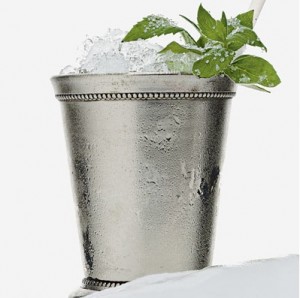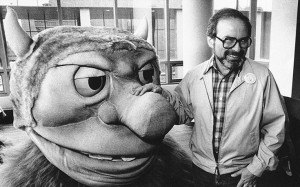Space does weird things to the human body.
From leaving you uncoordinated after months spent in weightlessness to atrophied muscles,Watch Money Heist Online space travel can wreak havoc on you physically.
But growing another head? That's a new one.
According to a new study published in the journal Regeneration, an amputated piece of a flatworm (D. japonica) grew two heads during its five weeks on the International Space Station.
SEE ALSO: Watch mesmerizing footage of SpaceX's historic rocket landingOn Earth, this is very rare kind of mutation for these varieties of worms, which are typically less than half an inch long and can regenerate from amputated segments.
"In more than 18 person-years of maintaining a colony of D. japonicathat involves more than 15,000 control worms in just the last five years alone, the Tufts researchers have never observed a spontaneous occurrence of double-headedness," a Tufts University news release states.
"Moreover, when the researchers amputated both heads from the space-exposed worm, the headless middle fragment regenerated into a double-headed worm, demonstrating that the body plan modification that occurred in the worm was permanent."
 Original image has been replaced. Credit: Mashable
Original image has been replaced. Credit: Mashable Some of the 15 flatworms sent to space aboard a SpaceX Dragon cargo craft in 2015 also spontaneously split into two or more identical pieces in a process called fission, even though the control samples maintained on the ground didn't go through that same process.
Also, when they came back to the planet, the worms that lived in space spent less time in the dark than the control group, and they were partially paralyzed before returning to normal a couple hours later, according to the statement.
The differences in the space-exploring flatworms and their control counterparts on the ground may not be entirely explained by spaceflight.
The researchers weren't able to simulate a launch and landing with the control group of flatworms. Plus, it wasn't easy to make sure that the two sets of worms were always kept at the same temperature.
Via GiphyIdeally, the next time the researchers send flatworms to space, they will be able to control for these discrepancies using real-time monitoring and simulations of the stress of launch and landing to make the environments of the two sets of worms as similar as possible.
These types of studies also have bearing on human exploration of the solar system.
“As humans transition toward becoming a space-faring species, it is important that we deduce the impact of spaceflight on regenerative health for the sake of medicine and the future of space laboratory research,” co-author of the study Junji Morokuma said in the statement.
Basically, in order to extend our reach out into the solar system, we need to figure out what it'll do to us first, and these types of studies hold at least some of those answers.
(Editor: {typename type="name"/})
 Live on Air
Live on Air
 Book Perfume, Newspaper Dresses by Sadie Stein
Book Perfume, Newspaper Dresses by Sadie Stein
 Dear Lane Pryce, Some Retroactive Advice by Adam Wilson
Dear Lane Pryce, Some Retroactive Advice by Adam Wilson
 Mary Shows Up
Mary Shows Up
Best tablet deal: Save $45 on Amazon Fire HD 10 tablet
 SAVE $45:As of April 24, the Amazon Fire HD 10 tablet is on sale for $94.99 at Amazon. That's a savi
...[Details]
SAVE $45:As of April 24, the Amazon Fire HD 10 tablet is on sale for $94.99 at Amazon. That's a savi
...[Details]
Literary Communes, Literary Parodies: Happy Monday! by Sadie Stein
 Literary Communes, Literary Parodies: Happy Monday!By Sadie SteinMay 7, 2012On the ShelfFebruary Hou
...[Details]
Literary Communes, Literary Parodies: Happy Monday!By Sadie SteinMay 7, 2012On the ShelfFebruary Hou
...[Details]
What We're Loving: Sake Bars, Met Balls, and Rhubarb by The Paris Review
 What We’re Loving: Sake Bars, Met Balls, and RhubarbBy The Paris ReviewMay 4, 2012This Week’s
...[Details]
What We’re Loving: Sake Bars, Met Balls, and RhubarbBy The Paris ReviewMay 4, 2012This Week’s
...[Details]
What We’re Loving: Janácek, Cooke, and Literary Booze by The Paris Review
 What We’re Loving: Janácek, Cooke, and Literary BoozeBy The Paris ReviewMay 11, 2012This Week’s Read
...[Details]
What We’re Loving: Janácek, Cooke, and Literary BoozeBy The Paris ReviewMay 11, 2012This Week’s Read
...[Details]
The Kindle Scribe just dropped to its lowest price ever, but is it worth it?
 Opens in a new window
...[Details]
Opens in a new window
...[Details]
Remembering Sendak, Gaining Honors by Sadie Stein
 Remembering Sendak, Gaining HonorsBy Sadie SteinMay 9, 2012On the ShelfBook sales around the world i
...[Details]
Remembering Sendak, Gaining HonorsBy Sadie SteinMay 9, 2012On the ShelfBook sales around the world i
...[Details]
Remembering Rosset and Sexy Hoaxes by Sadie Stein
 Remembering Rosset and Sexy HoaxesBy Sadie SteinMay 16, 2012On the ShelfIn the Evergreen Reviewhe fo
...[Details]
Remembering Rosset and Sexy HoaxesBy Sadie SteinMay 16, 2012On the ShelfIn the Evergreen Reviewhe fo
...[Details]
A Little Vacation from Writing by Sadie Stein
 A Little Vacation from WritingBy Sadie SteinMay 25, 2012BulletinThe most obvious attraction of quota
...[Details]
A Little Vacation from WritingBy Sadie SteinMay 25, 2012BulletinThe most obvious attraction of quota
...[Details]
Best keyboard deals: Save on Asus gaming keyboards at Amazon
 The best Asus gaming keyboard deals Best Asus Keyboard Deal
...[Details]
The best Asus gaming keyboard deals Best Asus Keyboard Deal
...[Details]
Owls, Hatred, and Blurbese by Sadie Stein
 Owls, Hatred, and BlurbeseBy Sadie SteinMay 23, 2012On the ShelfThe lit-flick streak continues! The
...[Details]
Owls, Hatred, and BlurbeseBy Sadie SteinMay 23, 2012On the ShelfThe lit-flick streak continues! The
...[Details]
接受PR>=1、BR>=1,流量相当,内容相关类链接。